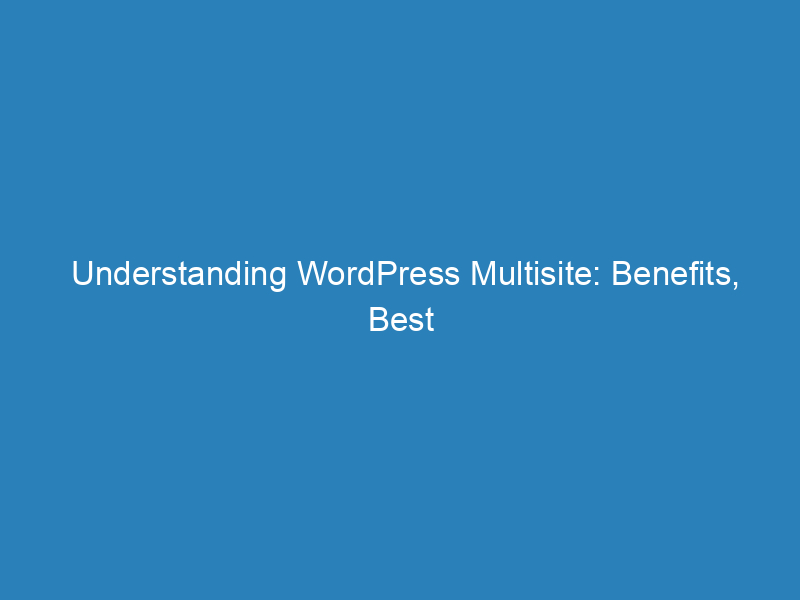
Understanding WordPress Multisite: Benefits, Best Practices, and When to Use It
Understanding WordPress Multisite is crucial for those looking to manage multiple sites effectively. This feature can simplify operations but comes with specific challenges that users must consider before implementation.
What Is WordPress Multisite?
WordPress Multisite is a powerful capability that allows users to run multiple websites from a single WordPress installation. This means you can manage a network of sites all under one dashboard, controlling site features, themes, and user roles. While theoretically capable of managing millions of sites, practical application often centers on networks with similar functionalities. A prime example of this is WordPress.com, one of the largest multisite networks on the web.
The feature was originally developed to help site owners manage several blogs easily. It became part of the WordPress core in version 3.0, which means today’s WordPress installations can be converted into multisite setups with relative ease.
When Should You Use Multisite?
Using WordPress Multisite is most beneficial when you need to create a network of sites that share common functionalities. This is particularly useful when the sites utilize similar plugins, applications, or server configurations. For optimal performance, limit the number of themes to those specifically chosen for the network, rather than allowing each site to upload custom themes. If your sites vary significantly in terms of plugins, themes, or customizations, a multisite setup may not be the best solution.
Universities often leverage multisite for internal blogging, providing staff with a consistent platform for communication. Similarly, real estate agencies use it to offer a uniform website template for their agents, maintaining a cohesive design while allowing individual content customization.
Challenges of Managing Diverse WordPress Sites
Originally, WordPress Multisite was a response to the lack of good options for managing distinct sites. However, with numerous management plugins available today, like Jetpack and ManageWP, users can effectively oversee various WordPress instances. These tools allow for centralized management, enabling you to monitor site statuses, apply updates, and perform routine maintenance tasks across multiple sites.
Best Practices for WordPress Multisite
If you determine that your needs align with a multisite setup, adhering to best practices is essential for success.
Engage a WordPress Consultant
Collaborating with a WordPress consultant who specializes in multisite networks can be incredibly beneficial, especially as your network grows. They can help monitor server resource usage and database maintenance, ensuring that your multisite remains efficient and effective.
Select an Experienced Hosting Provider
Choosing a reputable hosting provider that understands the intricacies of multisite setups is crucial. A good provider, such as Pressable, can support large multisite networks and has the technology in place to ensure smooth operation. Their expertise can significantly enhance the likelihood of your project’s success.
By following these guidelines and understanding the functionalities of WordPress Multisite, you can better determine if this setup aligns with your website management needs.
